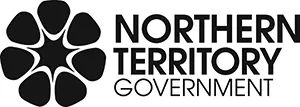Hand, foot and mouth disease
Hand, foot and mouth disease is a common infection which causes blisters on the inside the mouth, hands and feet.
It can also can be on the buttocks and nappy area.
It is most commonly caused by one of the human coxsackieviruses, part of a group of viruses called enteroviruses.
If Enterovirus 71 is the particular virus causing hand, foot and mouth disease, it may result in more severe forms of the disease.
This includes rare neurological complications and death.
How it spreads
Hand, foot and mouth disease is spread by:
- breathing in aerosol droplets of nose and throat discharges following coughing or sneezing
- direct contact with nose and throat discharges, blister fluid or faeces of infected persons.
Hand foot and mouth disease only affects humans. It is not related to the similar sounding ‘foot and mouth’ disease that affects animals.
Who is at risk
Hand foot and mouth disease commonly affects children aged less than 10 years and outbreaks may occur in child care settings.
Most people have had the disease by the time they are adults. Therefore, they do not become symptomatic if exposed to the same virus again.
There is no clear evidence of risk to unborn babies from hand, foot and mouth disease.
However, they can pass the infection onto the newborn baby if a mother has the disease shortly before birth. The baby will rarely have severe disease.
Symptoms
Symptoms may develop 3 to 5 days after exposure, and they usually start with:
- fatigue
- loss of energy
- poor appetite
- a mild fever
- a sore throat and mouth
- poor feeding in a baby or young child this may present.
A few days after this a non-itchy, vesicular rash may develop on the palms, hands, soles of the feet and inside the mouth.
Mouth lesions can be widespread on the inside surfaces of the cheeks and gums and sides of the tongue and can be very painful.
In some cases, the rash may also be present on the buttocks, knees and elbows.
Infectious period
A person is infectious from when they first feel unwell until all the blisters have dried naturally.
They should not be pierced as the fluid inside them is infectious.
Faeces can remain infectious for several weeks.
Treatment
There is no specific treatment and antibiotics are not helpful.
If you have a rash, it will usually disappear and you will feel better within about a week.
All that is required for most people include:
- rest
- frequent fluids to prevent dehydration
- pain relief medication like paracetamol - for mouth blisters that make eating and drinking very painful:
- ask your pharmacist or doctor about what medicines are good to use.
Very rarely, complications of hand, foot and mouth disease can occur, including meningitis, encephalitis or paralysis.
When to see a doctor
You should see a doctor if:
- your child refuses fluids, has a severe headache or is not improving
- you have a severe headache, stiff neck or weakness, or your fever persists and you're not getting better.
Prevention
There is no vaccine for hand, foot and mouth disease.
On recovery from the illness, a person will develop immunity against the one specific type of virus that caused the infection.
However, further episodes of the disease are possible from a different virus causing hand, foot and mouth disease,
Promoting good hygiene is the best way to stop the spread of the virus.
Therefore, you should:
- regularly wash your hands, especially when changing nappies and handling soiled linen
- wash toys contaminated with saliva, and cover your mouth when sneezing and coughing.
Information for health professionals
To find out more, go to the NT Health website.
Contact
Contact your nearest Centre for Disease Control on the NT Health website.
